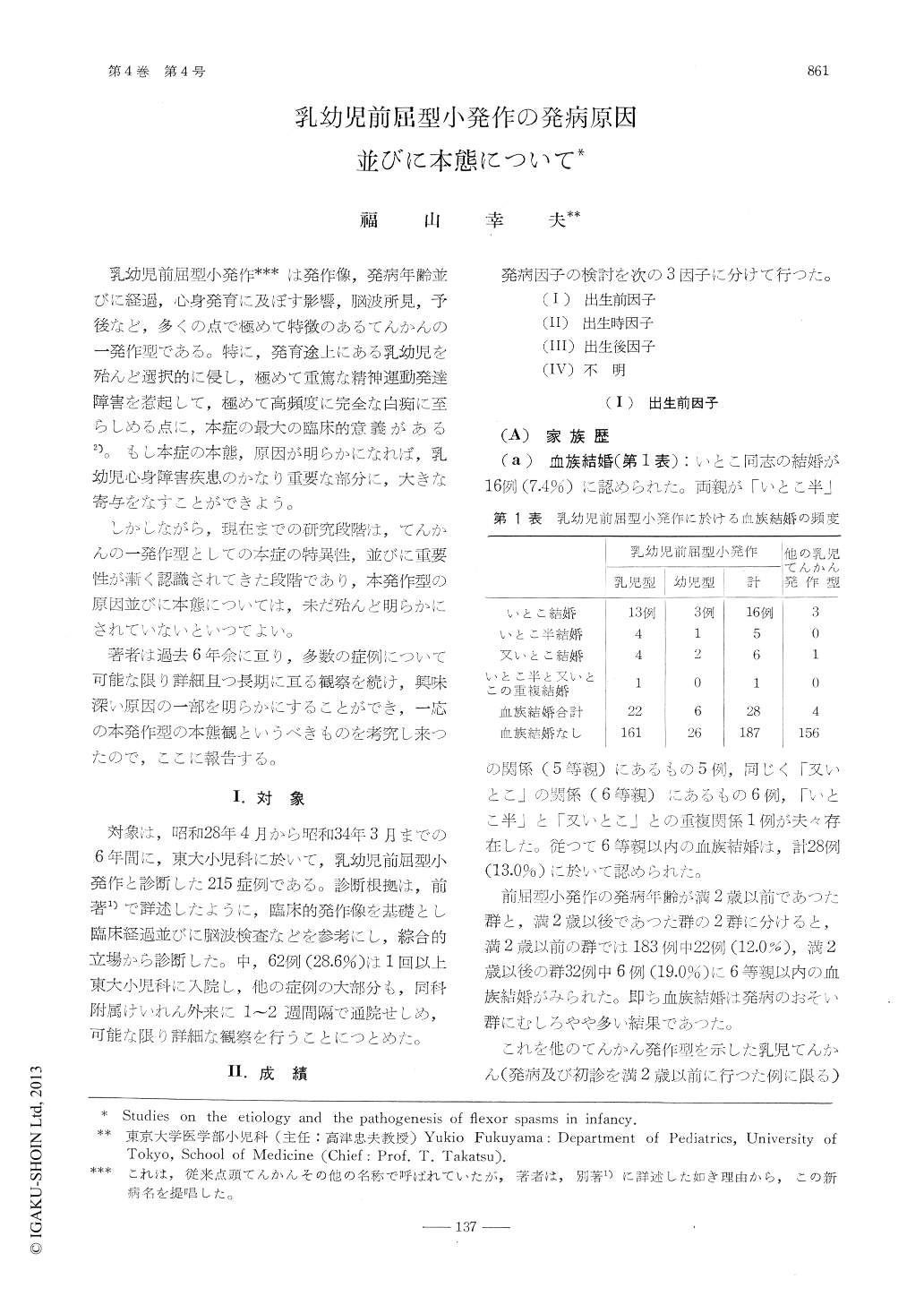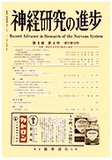Japanese
English
- 有料閲覧
- Abstract 文献概要
- 1ページ目 Look Inside
乳幼児前屈型小発作***は発作像,発病年齢並びに経過,心身発育に及ぼす影響,脳波所見,予後など,多くの点で極めて特徴のあるてんかんの一発作型である。特に,発育途上にある乳幼児を殆んど選択的に侵し,極めて重篤な精神運動発達障害を惹起して,極めて高頻度に完全な白痴に至らしめる点に,本症の最大の臨床的意義がある2)。もし本症の本態,原因が明らかになれば,乳幼児心身障害疾患のかなり重要な部分に,大きな寄与をなすことができよう。
しかしながら,現在までの研究段階は,てんかんの一発作型としての本症の特異性,並びに重要性が漸く認識されてきた段階であり,本発作型の原因並びに本態については,未だ殆んど明らかにされていないといつてよい。
The author investigated the etiology of 215cases of flexor spasms in infancy.
(1) In summary, prenatal causal factors werenoticed in 43 cases (19.8%), perinatal factors in66 cases (31.1%) and postnatal factors in 25 cases(11.8%), but in other 78 cases (11.8%) never befound abnormal histories or symptoms suggestingtheir etiologies.
(2) In the prenatally determined group therewere included those patients : 7 cases of tuberoussclerosis (one of which was dissected), one caseof early infantile type of diffuse sclerosis (verifiedby autopsy), one case of mongolism, 2 cases ofphenylketonuria, one case of Vogt-Spielmeyer'sdisease, 8 pairs of equally affected siblings, andothers.
(3) Some abnormalities in the process ofbirth or in the general condition (luring theneonatal period were found in 83 (58%) among144 cases by close examinations of theirhistories. But there are many patients in whom twoor more many factors overlapped. Collectivelythinking, perinatal factors were judged to be thedefinive cause in 66 cases as above mentioned.
(4) Relatively small number of patients (25cases, 11.8%) were victims of various postnataldiseases such as encephalitis of well- or ill-definedetiology, meningitis (tuberculous, parotitic), Ekiri-like syndromes with acute dehydration, acuteinfantile hemiplegia, and :prolonged neonatalicterus.
(5) No etiologic factors were found in about one-third of cases of flexor spasms in infancy. Inthese so-called idiopathic cases, it was usual tofound the history that previously normal infantbecame suddenly demented with the onset ofseizures. Whether the idiopathic group of flexorspasms in infancy would form or not any newdisease entity such as myoclonic encephalitis orcongenital enzymopathic disease, it cannot besaid but it may be possible. These problems willbe determined in future by more exact laboratoryexaminations and more numerous autopsies.

Copyright © 1960, Igaku-Shoin Ltd. All rights reserved.


